Finding the right education, choosing the right destination county and then arranging the move overseas is not something that can be done quickly by Chinese students considering overseas education. Chinese people like to carefully research everything before they begin their preparations. For marketers and education institutions planning their strategy, it’s important to understand how students and families prepare and plan for their overseas studies. Knowing when to begin a campaign and how to reach prospective Chinese students is vital to success.
The critical period students prepare and plan
It is important to reach Chinese parents and students during the planning period, and marketers need to present a compelling and influential campaign at the right time. Students in China start to plan their overseas study well ahead of time, undertaking thorough research. The 2016 figures show that overall, 47% start planning one year prior to their study period, 24% plan two years ahead while 12% start planning earlier than two years prior1.
A breakdown of those figures shows that a higher percentage of students looking for a high school education (25%) begin searching six months before the beginning of their study period than the other education levels. Master’s level has the highest share of students (49%) across education levels preparing during the 12 months before their study period begins2.
Students in China start to plan their overseas study well ahead of time, undertaking thorough research.
Time period for planning overseas education
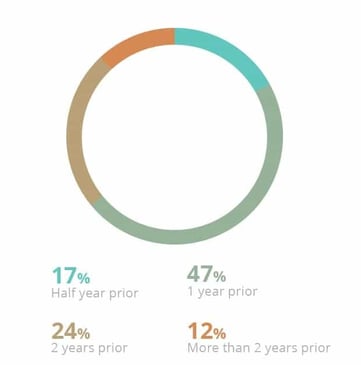
Time period for planning overseas education by study level
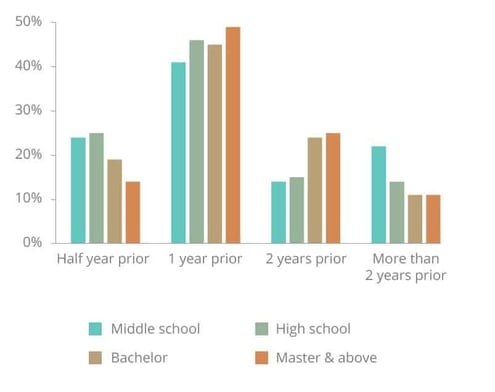
The key research channels used by students
Students from China use a variety of channels to source information about their destination and their course of study. Marketers and education institutions need to understand that the official university is typically not the first source able to reach students for awareness of the university and initial rounds of information collection for overseas education.
2015 figures reveal that 31% of students turn to to find the information they require. More than a quarter of students (28%) use vertical websites regarding overseas education. 26% find their information at an exhibition or workshop about overseas education while 25% turn to a study agency for help. The more traditional channels are now out-dated and ineffective. For example, only 16% of students turn to papers or brochures3.
Key research channels to source information (before official website)
.jpg?width=640&name=Key%20research%20channels%20to%20source%20information%20(before%20official%20website).jpg)
Of all these channels, the most effective is the education exhibition and workshop with an effectiveness rating of 100%. The next most effective is WeChat marketing (social media) at 88%, followed by vertical websites (76%), outdoor advertising (71%) and the information portal (66%). Weibo is comparatively the least effective channel among all the channels being surveyed4. Of all the channels to source information, the most effective is the education exhibition and workshop, with an effectiveness rating of 100%, followed by WeChat and vertical websites.
Effectiveness of overseas education ads by channel
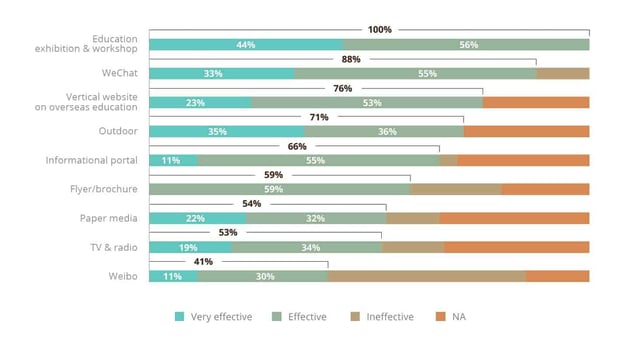
To reach the majority of students as they research, marketers need to test the optimal channel mix to their individual organisations and include the most effective sources as part of their campaigns.
The critical period students search for information
There is a distinct period when Chinese people search for information regarding overseas education programs, and marketers and education institutions need to be aware of and leverage it.
For searches with Australia as the destination, Sogou analytics 2016 figures show peak search times as April - July, and another spike in October. Steady interest was shown from January through to April excluding the impact from Chinese New Year5.
Peak season for searching Australia as the destination shows during April - July, and another spike in October.
However, June is the critical month across Australia, USA, UK and Canada because that is when Gaokao, the National Higher Education Entrance Examination, is held. At that time, prospective students, their families and even the general public pay a lot of attention to topics relating to universities and higher education6.
June is the critical month across Australia, USA, UK and Canada because that is when Gaokao is held.
It’s important to understand that Gaokao in June signifies prime time for universities to promote themselves. Remember that the majority of students begin planning twelve months ahead of time and some do six to twelve months earlier. This is the prime time to catch their attention.
Monthly search volume for key destinations
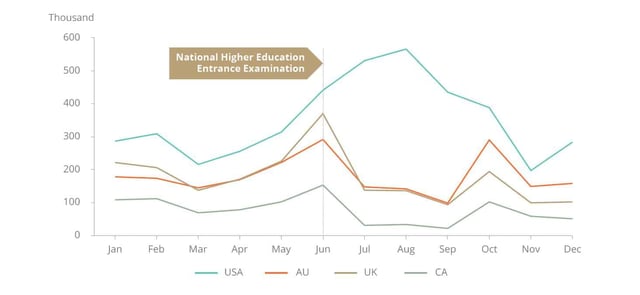
Further, on a granular level, the peak search time of day for Australia by desktop users are 9am (7.1%), 1pm (9.5%), 3pm (8.7%), and 4pm (7.3%). By contrast, mobile users are spread between 9am – 4pm while still more are likely to be online at 10am (6.9%), 11am (6.0%), 3pm (6.7%), 8pm (6.9%) and a huge 12.0% online at 9pm7.
Time slot distribution of online search volume from China for Australian education
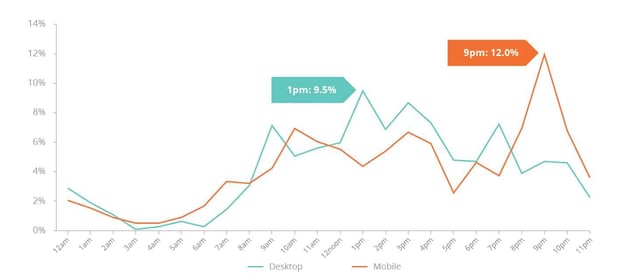
Understanding the channels students and their families use to source information plus the time period they search for this information equips marketers marketing in China to reach Chinese students at the right time using the most effective means.
1,2 (2016). Chinese Students’ Overseas Study Report 2016. New Oriental Group.3,4 (2015) Chinese Students’ Overseas Study Status Report 2015. Jointly published by eol.cn and gol.edu.cn.
5,6,7 Sogou Analytics 2016.











